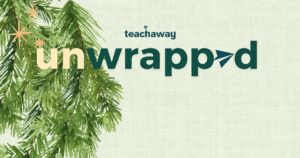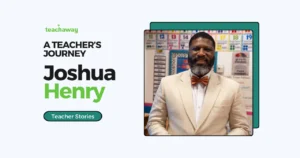Dave Stewart is a former ESL teacher who currently works as a Placement Coordinator for the Explore Program in China. He has oodles of teaching experience and has spent three and a half years in South Korea teaching children, followed by a year teaching adults in China. He’s in a unique position to discuss the pros and cons of teaching adults versus children, as well as to give a little insight into the differences between teaching English in China and South Korea.
In this two-part blog series, we talk about everything from cultural differences to classroom management techniques. There’s a wealth of information in there about teaching in China with loads of ideas about how to manage the differences between teaching adults and kids.
Why did you switch from teaching kids to adults?
I’d moved home at the time and was struggling to find a job teaching ESL in Vancouver. I had a CELTA certificate, so I ticked most of the boxes, but most of the positions here required someone who could teach adults.
I found that employers were concerned that most of my experience was with kids in Korea. It wasn’t really the right sort of experience for the ESL roles that were available in Canada. I tried a few part-time positions but found it hard to make the transition. It became quite clear that there were some big differences between teaching adults and kids.
Like many teachers, I realized one of the best ways to get enough teaching experience with adults was to find a country where I could teach adults for a solid year.
Moving to China, gave me the chance to improve my adult-teaching skills and figure out ways to translate my experience teaching kids to build adult-friendly lessons.

Sign up to Teach Away today for access to the latest
teaching jobs around the world.
Can you outline some of the differences between teaching adults and kids?
Some of the differences between teaching ESL to adults and children are pretty obvious, but it can be hard to imagine the full impact of them until you’re faced with a group of adults and realise some of the teaching methods kids enjoy aren’t going to cut it.
One of the big differences is the attention span of your students
With adults they will sit quietly, so it’s possible to do longer activities, with kids you need short snappy tasks and even then they get bored easily. The little bit of extra time adults will spend working out a problem means tasks can be more challenging than with kids – where often entertainment is a big part of the native English speakers role as an ESL teacher
The potential for conflict is greater in a classroom of kids
Designing lessons you’ve to worry about stuff like: Is the hyper kid going to knock over the shy kid if we do a kinesthetic activity? Will implementing a points game cause problems? Does this game require too much patience for kids to concentrate on it? And even, do these kids have the motor skills required to do the activity? With adults there just aren’t those worries, usually they will all be able to behave well and work on an activity.
Adults appreciate specific grammar takeaways
With kids this can fly out the window. They are distracted easily and aren’t likely to be enthusiastic if you start explaining the finer points of grammar. You’ll teach them the same tenses, but you won’t let them know in the same way. With adults I had to outline the class objectives and key takeaways.
Adults learners appreciate knowing the value of the class and what they should know by the end of it. With children it can be more of a case of tricking them into learning, coaxing them with games and activities that won’t make them nod off at the desk.
Adults can be harder to engage and more passive in the classroom
This is a pro and a con, really. It can make speaking activities a bit awkward. As a teacher you need to get comfortable with the silence and realize it doesn’t reflect badly on you as a teacher. You’ve got to negotiate with the students, gently nudge them to speak more and build up trust. Especially with Chinese students, they can be shy or reticent with expressing themselves in a new language. Taking time to build up a rapport with the students is wise. They’re going to need to trust you before they will want to step out of their comfort zones.
Kids WILL go berserk
Bored children do not a peaceful classroom make. A bored adult might stare blankly at you or take a nap. A poorly-managed classroom can dissolve into utter chaos. Think running, screaming and the stuff of teacher’s nightmares!
Teaching adults has less extreme highs and lows
Teaching ESL to kids is a rollercoaster. In a single day you can go from an extreme high to an extreme low. Even in a single class! Things can devolve as soon as an activity they don’t like is introduced or boredom creeps in. With adults, you may not get as many highs, but the overall day will be more balanced and easier to plan. You’ll pretty much know what you’re going to face from one class to the next.
With kids, the lows can often be parent related. If you’ve got helicopter parenting going on, it’s going to be stressful. I’ve been called into the principal’s office because I had the audacity to tell the students the tomato was a fruit. Apparently this flew in the face of what a parent had said, and I was asked to steer clear of controversial subjects like classifying fruits and vegetables!
How does the development of young learners and adult learners differ in the ESL classroom?
I guess with kids it’s down to the fact that they progress as people as well as learners. You’re not just seeing them learn English, but you watch them develop social skills.
Kids tend to have less respect for the work you’re doing as a teacher. I can remember students crumpling up worksheets I’d spent ages devising, and just tossing them in their bookbags.
With adults they treat those assignments like gold, and value your time as a teacher more. They want to be in your classroom. With a few rare exceptions – these are usually people who are being forced to learn English by their bosses – and in that case they will not disturb the class and tend to just be a bit quieter.
With adults you can see them really nail the learning goals overtime, whereas kids the whole process can feel a bit more holistic. If adults are invested in the class they will learn, whereas kids might be more interested in what’s for lunch in the cafeteria that day.
So, if you teach adults does everything have to be super serious and academic?
Not at all, but you do have to build up the rapport with your students slowly. They’re not going to come into the classroom skipping and joking. I definitely toned down the silliness with adults, but I injected some nonetheless.
You have to coax that atmosphere you want out of the classroom. I used songs to help them with pronunciation or threw a plush toy around the classroom to get them chatting.
Another thing I did was get them to practice the “P” sound by placing a tiny ball of paper on the backs of their hands and getting them to see if their “P” sound was strong enough to blow the ball from their hands.
With adults you can still have fun, a lot of the errors they are making are fossilized, so it’s about getting them to practice in a fun way, without it seeming pointless. Kids tend to want to know what they will be doing, Adults like to understand why they are doing it.
Can you give an example of how to connect with your adult students and build trust?
I still remember one of my first Business English classes in China. I had the students line up like a hockey team and practice handshakes. They really appreciated it, once they got over the embarrassment, and they were cured of limp-wrist syndrome for all future business meetings! The reason this worked was that it was something they could do with a little effort, everyone was in the same boat at the same time, so no one student was called out alone and they had a valuable take away!
Is teaching grammar harder with adults?
I would say that with adults you really need to know your stuff. I definitely couldn’t imagine teaching them without a background that involved some kind of TEFL training. Students tend to know the grammar better than you would as a native speaker because they’ve learned it by rote. That means that confident students will challenge you on grammar, so you need to know how to respond.
Where are adult learners weak when it comes to learning English?
The adult learners are generally strong at grammar and writing but fall down when it comes to listening and speaking. So I would focus on the latter two skills. There’s apprehension among students about coming across as seeming silly or stupid. That’s one of the main reasons they don’t speak up. Once you get over that hump, teaching ESL to adults can be rewarding. You’re not there to be a grammar-monster, merely to encourage them and build up their confidence in expressing themselves in English.
What kind of ESL teachers do you think are better suited to teaching adults?
It’s definitely a better fit for quieter teachers who are reluctant to be get silly in the classroom. Kids need to be entertained, but teaching adults can give you space to be a little more reserved. It’s not as physical a role in that sense, with kids you might find yourself working a lot harder to manage the classroom. I think someone patient and detail orientated is the best fit for adult learners.
What does the average day look like teaching English to adults abroad?
I always found the early mornings in Korea a strain. I’m not a morning person, so the later hours in China suited me. My day started after noon and I would have an easy morning, get caught up on Netflix and emails then head into school.
My first hour was always a planning period, I could look through the day’s lessons, print supplements and activity sheets.
The rest of my day was broken up into three different types of classes. Face-to-face conversation classes with up to 4 students. There were workshops which were regular classes with up to 25 students at a time and life clubs where the students did team-building activities in English.
Did you have to design your own lessons and materials?
It was a mix, although I found that teaching adults in China was a bit more lenient around lesson planning, I could get more creative. With the kids in Korea I was sticking very rigidly to the books provided and there wasn’t a lot of scope for getting inventive. With the adults I could use the materials provided or, as long as the adults had the same learning outcomes, I could adjust as I saw fit.
If you were to teach abroad again, would you choose adults or children? And what country would you pick?
I think I would choose adults simply because you end up with more energy at the end of the day. With kids you have extreme highs and lows, which can be draining. With adults, life feels a bit more balanced. I would also go with China, it’s such a big country and there’s a never-ending list of things to do there.
In part two, Dave will go into more depth about his time teaching in China. In the meantime, feel free to find out more about the Explore program in China.






